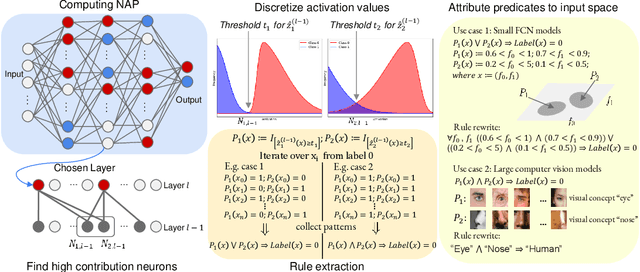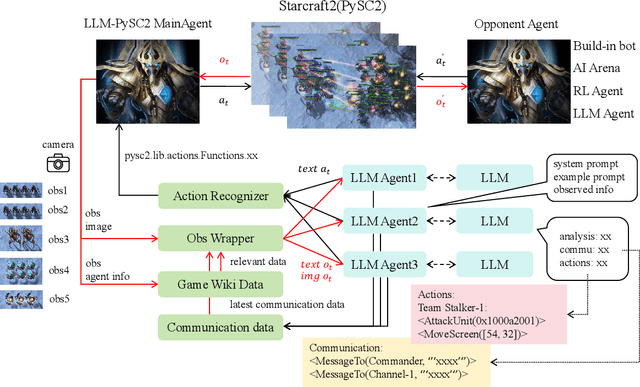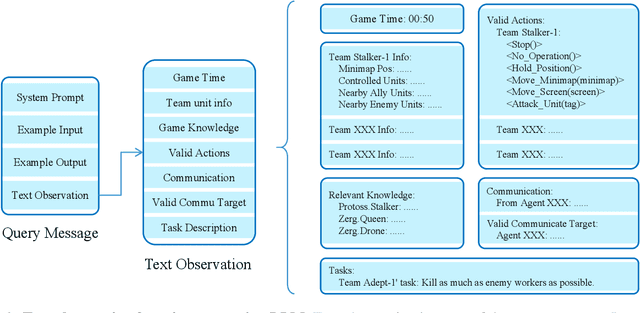Xiaojie Xu
PreGenie: An Agentic Framework for High-quality Visual Presentation Generation
May 27, 2025Abstract:Visual presentations are vital for effective communication. Early attempts to automate their creation using deep learning often faced issues such as poorly organized layouts, inaccurate text summarization, and a lack of image understanding, leading to mismatched visuals and text. These limitations restrict their application in formal contexts like business and scientific research. To address these challenges, we propose PreGenie, an agentic and modular framework powered by multimodal large language models (MLLMs) for generating high-quality visual presentations. PreGenie is built on the Slidev presentation framework, where slides are rendered from Markdown code. It operates in two stages: (1) Analysis and Initial Generation, which summarizes multimodal input and generates initial code, and (2) Review and Re-generation, which iteratively reviews intermediate code and rendered slides to produce final, high-quality presentations. Each stage leverages multiple MLLMs that collaborate and share information. Comprehensive experiments demonstrate that PreGenie excels in multimodal understanding, outperforming existing models in both aesthetics and content consistency, while aligning more closely with human design preferences.
POSTA: A Go-to Framework for Customized Artistic Poster Generation
Mar 19, 2025Abstract:Poster design is a critical medium for visual communication. Prior work has explored automatic poster design using deep learning techniques, but these approaches lack text accuracy, user customization, and aesthetic appeal, limiting their applicability in artistic domains such as movies and exhibitions, where both clear content delivery and visual impact are essential. To address these limitations, we present POSTA: a modular framework powered by diffusion models and multimodal large language models (MLLMs) for customized artistic poster generation. The framework consists of three modules. Background Diffusion creates a themed background based on user input. Design MLLM then generates layout and typography elements that align with and complement the background style. Finally, to enhance the poster's aesthetic appeal, ArtText Diffusion applies additional stylization to key text elements. The final result is a visually cohesive and appealing poster, with a fully modular process that allows for complete customization. To train our models, we develop the PosterArt dataset, comprising high-quality artistic posters annotated with layout, typography, and pixel-level stylized text segmentation. Our comprehensive experimental analysis demonstrates POSTA's exceptional controllability and design diversity, outperforming existing models in both text accuracy and aesthetic quality.
Long-Video Audio Synthesis with Multi-Agent Collaboration
Mar 17, 2025Abstract:Video-to-audio synthesis, which generates synchronized audio for visual content, critically enhances viewer immersion and narrative coherence in film and interactive media. However, video-to-audio dubbing for long-form content remains an unsolved challenge due to dynamic semantic shifts, temporal misalignment, and the absence of dedicated datasets. While existing methods excel in short videos, they falter in long scenarios (e.g., movies) due to fragmented synthesis and inadequate cross-scene consistency. We propose LVAS-Agent, a novel multi-agent framework that emulates professional dubbing workflows through collaborative role specialization. Our approach decomposes long-video synthesis into four steps including scene segmentation, script generation, sound design and audio synthesis. Central innovations include a discussion-correction mechanism for scene/script refinement and a generation-retrieval loop for temporal-semantic alignment. To enable systematic evaluation, we introduce LVAS-Bench, the first benchmark with 207 professionally curated long videos spanning diverse scenarios. Experiments demonstrate superior audio-visual alignment over baseline methods. Project page: https://lvas-agent.github.io
Reflection of Episodes: Learning to Play Game from Expert and Self Experiences
Feb 19, 2025Abstract:StarCraft II is a complex and dynamic real-time strategy (RTS) game environment, which is very suitable for artificial intelligence and reinforcement learning research. To address the problem of Large Language Model(LLM) learning in complex environments through self-reflection, we propose a Reflection of Episodes(ROE) framework based on expert experience and self-experience. This framework first obtains key information in the game through a keyframe selection method, then makes decisions based on expert experience and self-experience. After a game is completed, it reflects on the previous experience to obtain new self-experience. Finally, in the experiment, our method beat the robot under the Very Hard difficulty in TextStarCraft II. We analyze the data of the LLM in the process of the game in detail, verified its effectiveness.
Decoding Interpretable Logic Rules from Neural Networks
Jan 14, 2025



Abstract:As deep neural networks continue to excel across various domains, their black-box nature has raised concerns about transparency and trust. In particular, interpretability has become increasingly essential for applications that demand high safety and knowledge rigor, such as drug discovery, autonomous driving, and genomics. However, progress in understanding even the simplest deep neural networks - such as fully connected networks - has been limited, despite their role as foundational elements in state-of-the-art models like ResNet and Transformer. In this paper, we address this challenge by introducing NeuroLogic, a novel approach for decoding interpretable logic rules from neural networks. NeuroLogic leverages neural activation patterns to capture the model's critical decision-making processes, translating them into logical rules represented by hidden predicates. Thanks to its flexible design in the grounding phase, NeuroLogic can be adapted to a wide range of neural networks. For simple fully connected neural networks, hidden predicates can be grounded in certain split patterns of original input features to derive decision-tree-like rules. For large, complex vision neural networks, NeuroLogic grounds hidden predicates into high-level visual concepts that are understandable to humans. Our empirical study demonstrates that NeuroLogic can extract global and interpretable rules from state-of-the-art models such as ResNet, a task at which existing work struggles. We believe NeuroLogic can help pave the way for understanding the black-box nature of neural networks.
VBench++: Comprehensive and Versatile Benchmark Suite for Video Generative Models
Nov 20, 2024



Abstract:Video generation has witnessed significant advancements, yet evaluating these models remains a challenge. A comprehensive evaluation benchmark for video generation is indispensable for two reasons: 1) Existing metrics do not fully align with human perceptions; 2) An ideal evaluation system should provide insights to inform future developments of video generation. To this end, we present VBench, a comprehensive benchmark suite that dissects "video generation quality" into specific, hierarchical, and disentangled dimensions, each with tailored prompts and evaluation methods. VBench has several appealing properties: 1) Comprehensive Dimensions: VBench comprises 16 dimensions in video generation (e.g., subject identity inconsistency, motion smoothness, temporal flickering, and spatial relationship, etc). The evaluation metrics with fine-grained levels reveal individual models' strengths and weaknesses. 2) Human Alignment: We also provide a dataset of human preference annotations to validate our benchmarks' alignment with human perception, for each evaluation dimension respectively. 3) Valuable Insights: We look into current models' ability across various evaluation dimensions, and various content types. We also investigate the gaps between video and image generation models. 4) Versatile Benchmarking: VBench++ supports evaluating text-to-video and image-to-video. We introduce a high-quality Image Suite with an adaptive aspect ratio to enable fair evaluations across different image-to-video generation settings. Beyond assessing technical quality, VBench++ evaluates the trustworthiness of video generative models, providing a more holistic view of model performance. 5) Full Open-Sourcing: We fully open-source VBench++ and continually add new video generation models to our leaderboard to drive forward the field of video generation.
LLM-PySC2: Starcraft II learning environment for Large Language Models
Nov 08, 2024



Abstract:This paper introduces a new environment LLM-PySC2 (the Large Language Model StarCraft II Learning Environment), a platform derived from DeepMind's StarCraft II Learning Environment that serves to develop Large Language Models (LLMs) based decision-making methodologies. This environment is the first to offer the complete StarCraft II action space, multi-modal observation interfaces, and a structured game knowledge database, which are seamlessly connected with various LLMs to facilitate the research of LLMs-based decision-making. To further support multi-agent research, we developed an LLM collaborative framework that supports multi-agent concurrent queries and multi-agent communication. In our experiments, the LLM-PySC2 environment is adapted to be compatible with the StarCraft Multi-Agent Challenge (SMAC) task group and provided eight new scenarios focused on macro-decision abilities. We evaluated nine mainstream LLMs in the experiments, and results show that sufficient parameters are necessary for LLMs to make decisions, but improving reasoning ability does not directly lead to better decision-making outcomes. Our findings further indicate the importance of enabling large models to learn autonomously in the deployment environment through parameter training or train-free learning techniques. Ultimately, we expect that the LLM-PySC2 environment can promote research on learning methods for LLMs, helping LLM-based methods better adapt to task scenarios.
From Bird's-Eye to Street View: Crafting Diverse and Condition-Aligned Images with Latent Diffusion Model
Sep 02, 2024Abstract:We explore Bird's-Eye View (BEV) generation, converting a BEV map into its corresponding multi-view street images. Valued for its unified spatial representation aiding multi-sensor fusion, BEV is pivotal for various autonomous driving applications. Creating accurate street-view images from BEV maps is essential for portraying complex traffic scenarios and enhancing driving algorithms. Concurrently, diffusion-based conditional image generation models have demonstrated remarkable outcomes, adept at producing diverse, high-quality, and condition-aligned results. Nonetheless, the training of these models demands substantial data and computational resources. Hence, exploring methods to fine-tune these advanced models, like Stable Diffusion, for specific conditional generation tasks emerges as a promising avenue. In this paper, we introduce a practical framework for generating images from a BEV layout. Our approach comprises two main components: the Neural View Transformation and the Street Image Generation. The Neural View Transformation phase converts the BEV map into aligned multi-view semantic segmentation maps by learning the shape correspondence between the BEV and perspective views. Subsequently, the Street Image Generation phase utilizes these segmentations as a condition to guide a fine-tuned latent diffusion model. This finetuning process ensures both view and style consistency. Our model leverages the generative capacity of large pretrained diffusion models within traffic contexts, effectively yielding diverse and condition-coherent street view images.
HPFF: Hierarchical Locally Supervised Learning with Patch Feature Fusion
Jul 09, 2024Abstract:Traditional deep learning relies on end-to-end backpropagation for training, but it suffers from drawbacks such as high memory consumption and not aligning with biological neural networks. Recent advancements have introduced locally supervised learning, which divides networks into modules with isolated gradients and trains them locally. However, this approach can lead to performance lag due to limited interaction between these modules, and the design of auxiliary networks occupies a certain amount of GPU memory. To overcome these limitations, we propose a novel model called HPFF that performs hierarchical locally supervised learning and patch-level feature computation on the auxiliary networks. Hierarchical Locally Supervised Learning (HiLo) enables the network to learn features at different granularity levels along their respective local paths. Specifically, the network is divided into two-level local modules: independent local modules and cascade local modules. The cascade local modules combine two adjacent independent local modules, incorporating both updates within the modules themselves and information exchange between adjacent modules. Patch Feature Fusion (PFF) reduces GPU memory usage by splitting the input features of the auxiliary networks into patches for computation. By averaging these patch-level features, it enhances the network's ability to focus more on those patterns that are prevalent across multiple patches. Furthermore, our method exhibits strong generalization capabilities and can be seamlessly integrated with existing techniques. We conduct experiments on CIFAR-10, STL-10, SVHN, and ImageNet datasets, and the results demonstrate that our proposed HPFF significantly outperforms previous approaches, consistently achieving state-of-the-art performance across different datasets. Our code is available at: https://github.com/Zeudfish/HPFF.
Momentum Auxiliary Network for Supervised Local Learning
Jul 09, 2024



Abstract:Deep neural networks conventionally employ end-to-end backpropagation for their training process, which lacks biological credibility and triggers a locking dilemma during network parameter updates, leading to significant GPU memory use. Supervised local learning, which segments the network into multiple local blocks updated by independent auxiliary networks. However, these methods cannot replace end-to-end training due to lower accuracy, as gradients only propagate within their local block, creating a lack of information exchange between blocks. To address this issue and establish information transfer across blocks, we propose a Momentum Auxiliary Network (MAN) that establishes a dynamic interaction mechanism. The MAN leverages an exponential moving average (EMA) of the parameters from adjacent local blocks to enhance information flow. This auxiliary network, updated through EMA, helps bridge the informational gap between blocks. Nevertheless, we observe that directly applying EMA parameters has certain limitations due to feature discrepancies among local blocks. To overcome this, we introduce learnable biases, further boosting performance. We have validated our method on four image classification datasets (CIFAR-10, STL-10, SVHN, ImageNet), attaining superior performance and substantial memory savings. Notably, our method can reduce GPU memory usage by more than 45\% on the ImageNet dataset compared to end-to-end training, while achieving higher performance. The Momentum Auxiliary Network thus offers a new perspective for supervised local learning. Our code is available at: https://github.com/JunhaoSu0/MAN.
 Add to Chrome
Add to Chrome Add to Firefox
Add to Firefox Add to Edge
Add to Edge